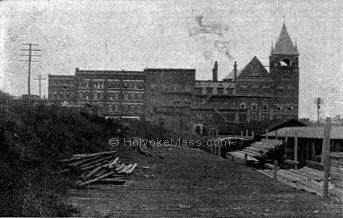
The Opera House Block.
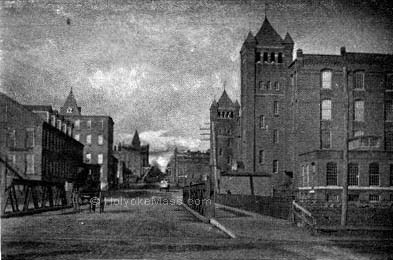
Appleton Street, From Back.
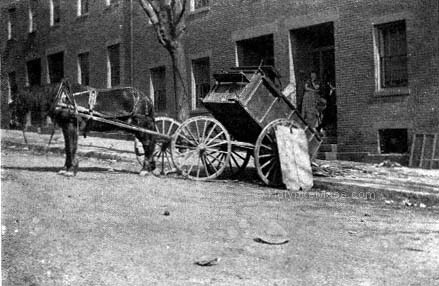
A Peddler — Oliver Street.
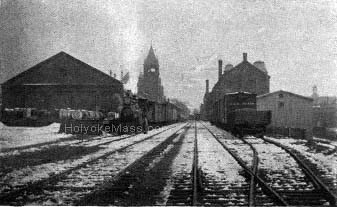
Looking up the Tracks Near the Westfield Depot.
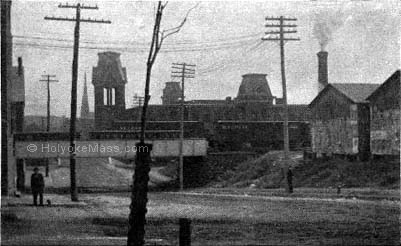
Cabot Street.
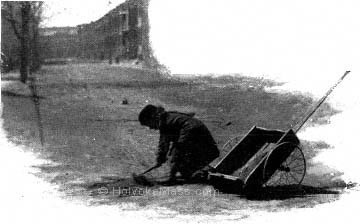
Getting A Load of Dirt.
|
The City Hall
From the Tracks of the Westfield Road.
Most of the victims were women, but that they died was not because they were weaker and were overpowered by the stronger, neither that the men shirked at their call. The stories of the bravery that made men go back to the burning building to save a wife or a child, will never be told. It is well enough to say that there need not have been such an awful loss of life if their could have been calm or self possession in the danger. But human beings are not given calm or self-possession in such crises. No one thought of the windows or side doors although they might have given escape to many. Wrought into the homes and lives of many of the French people living to-day in Holyoke are many sad stories that arose from the fire that claimed from the crowd of worshipers seventy-two people and placed lasting marks upon thirty-nine more.
At her seat before the organ, with her hands never removed from the keys, they found Ida Mennier, the organist. She had fainted in the first sudden fright of the panic, and though smoke had brought suffocation and death, she had not fallen from her seat. One mother had eight children in the building and lost them all. Noticed on the persons of the victims were gleaming jewels, bracelets, rings and brooches, examples of the taste of this beauty-loving people for personal adornment. A watch worn by one woman ticked on through the disturbance that cost her life, and did not stop until four o’clock next morning. One young man escaped, only to mourn his bride of a week before.
Never will the men who worked among them forget the anguish in the cry raised in the French tongue: "Pour l’amour de ceil, sauve moi!" (For the love of heaven, save me.) But man is kind to his stricken fellows, and scarcely was the terror known through the young city when all Holyoke offered its best to the sufferers. Businesses and manufacturing firms that had lost many of their workers, told their bankers to draw at sight for any amount while help was needed. The Sisters of Charity came, and with training and skill to direct, did noble work. All that the doctors could do and that the mayor and city government could propose, was done.
That was Thursday, and the Saturday following was the day of the funeral. From the new and handsome building they were putting up for their sacred place there was made the song and prayer of sad requium for the dead. For all the city it was a day of mourning when the six hearses and twenty-one business teams behind wound their way across the bridge and two miles beyond to the cemetery, where were laid these people almost as strangers in a strange land. The next day was Memorial day, the saddest one that Holyoke has ever known.
|